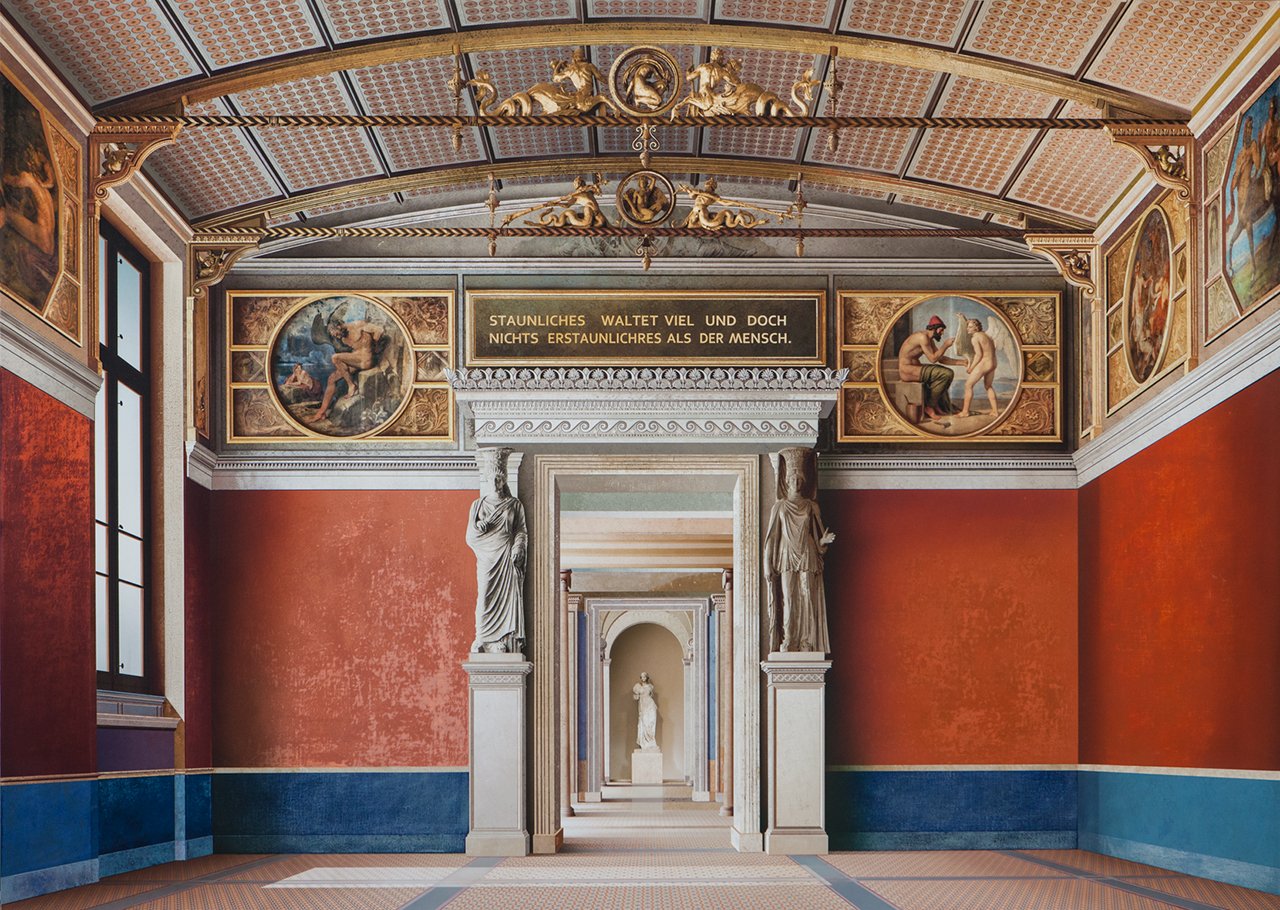
Ben Johnson
Room of the Niobids II
2013
Acrylic on canvas
71 x 98 in / 180 x 252 cm.
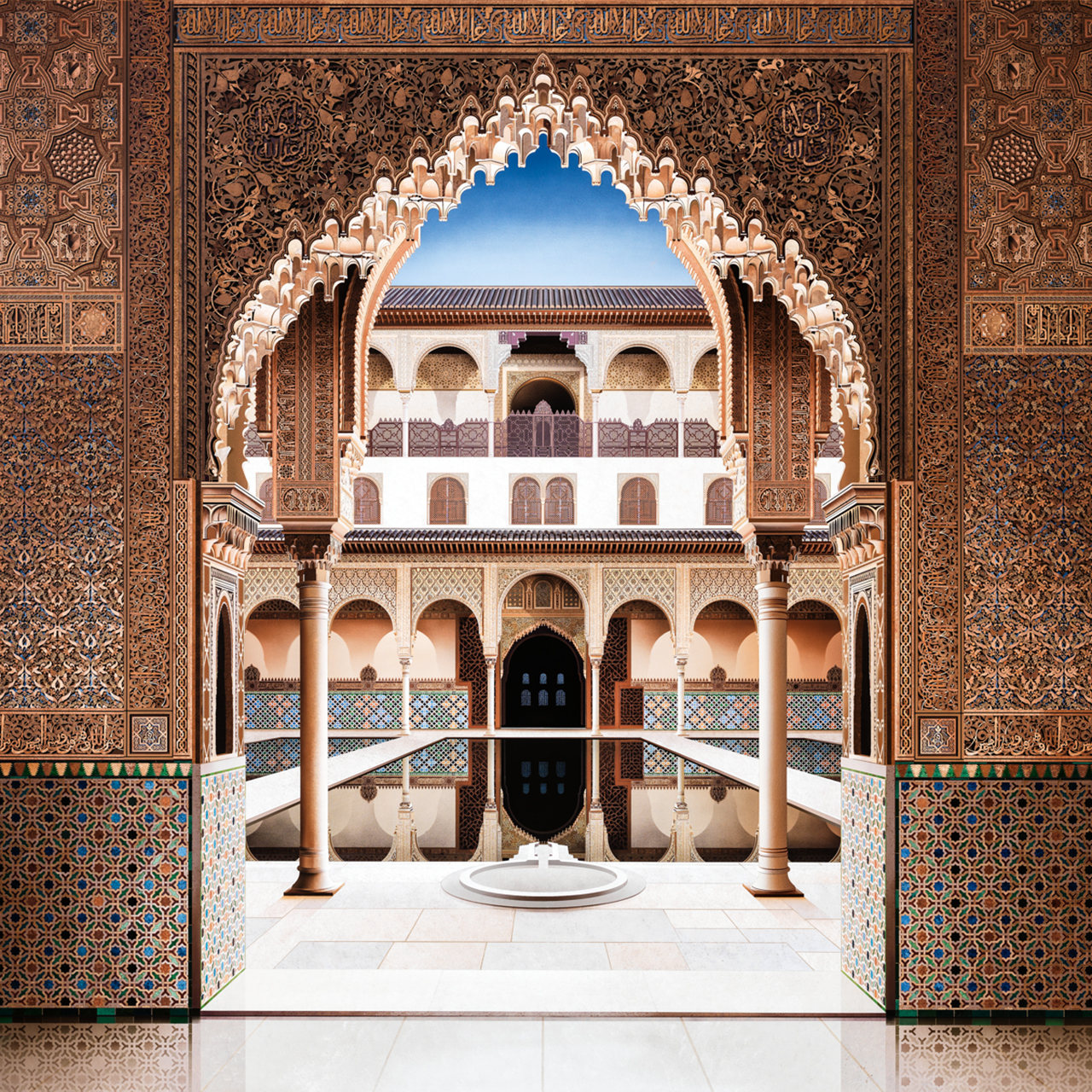
Ben Johnson
Patio de los Arrayanes
2015
Acrylic on canvas
220 x 220 cm.
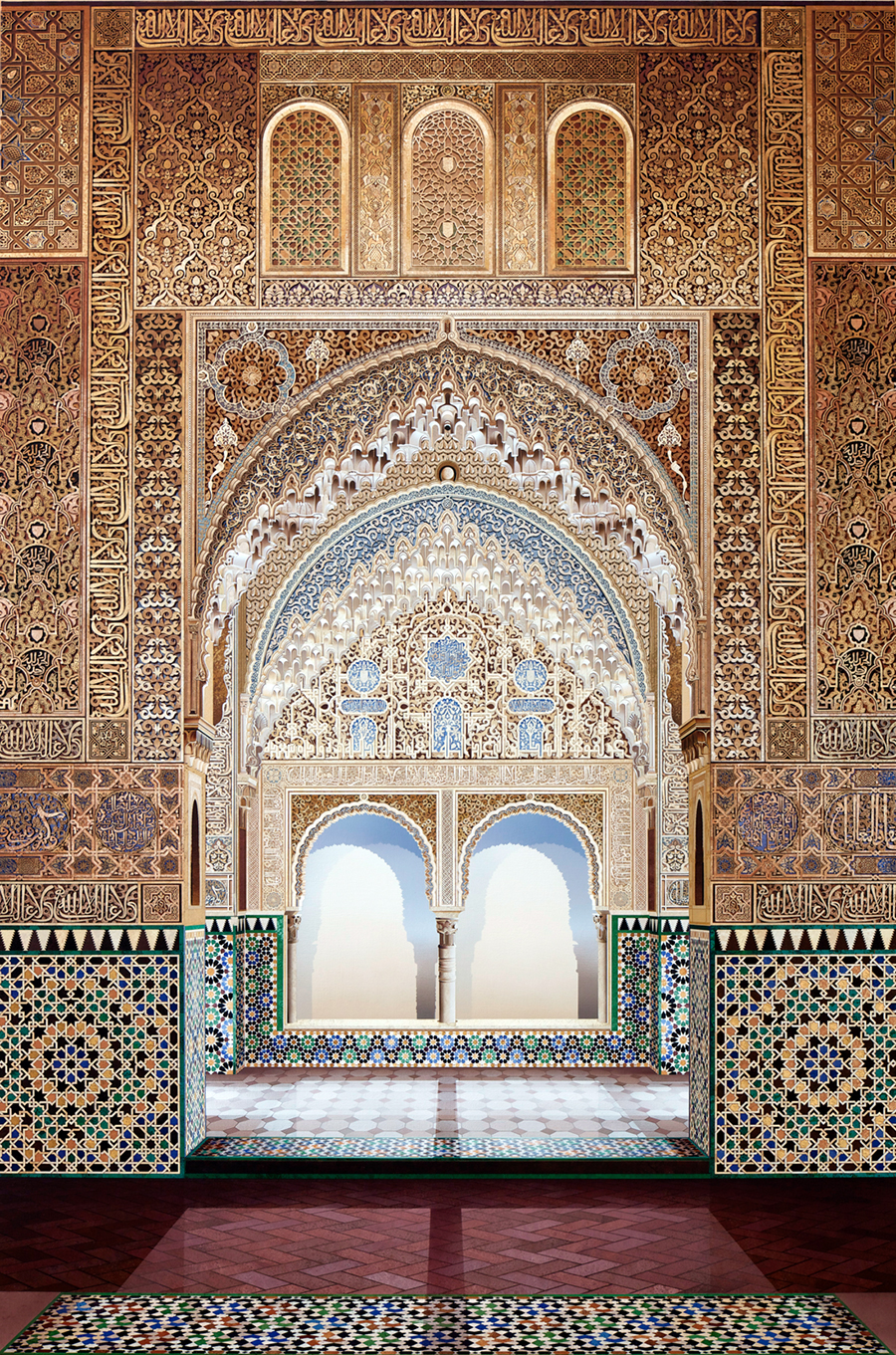
Ben Johnson
Approaching the Mirador
2013
Acrylic on canvas
89 x 59 in / 225 x 150 cm.
To achieve the accuracy observed even in the minutest details of his paintings, Johnson follows a process that involves drawing, multiple layers of stencilling and meticulous colour-mixing. The sheer effort and time required to complete these paintings is put into perspective only when one listens to the artist himself describe his process: in a recent BBC documentary, Johnson explains that no less that 25 layers of stencilling were required to complete a single column in one of his elaborate Alhambra palace paintings, and that it took ten people three years and approximately 60,000 hours of work to complete the monumental Liverpool Cityscape painting (2008) noting that if a single person were to do the same amount of work, it would have taken them 17 years to complete the massive five-meter-wide painting.
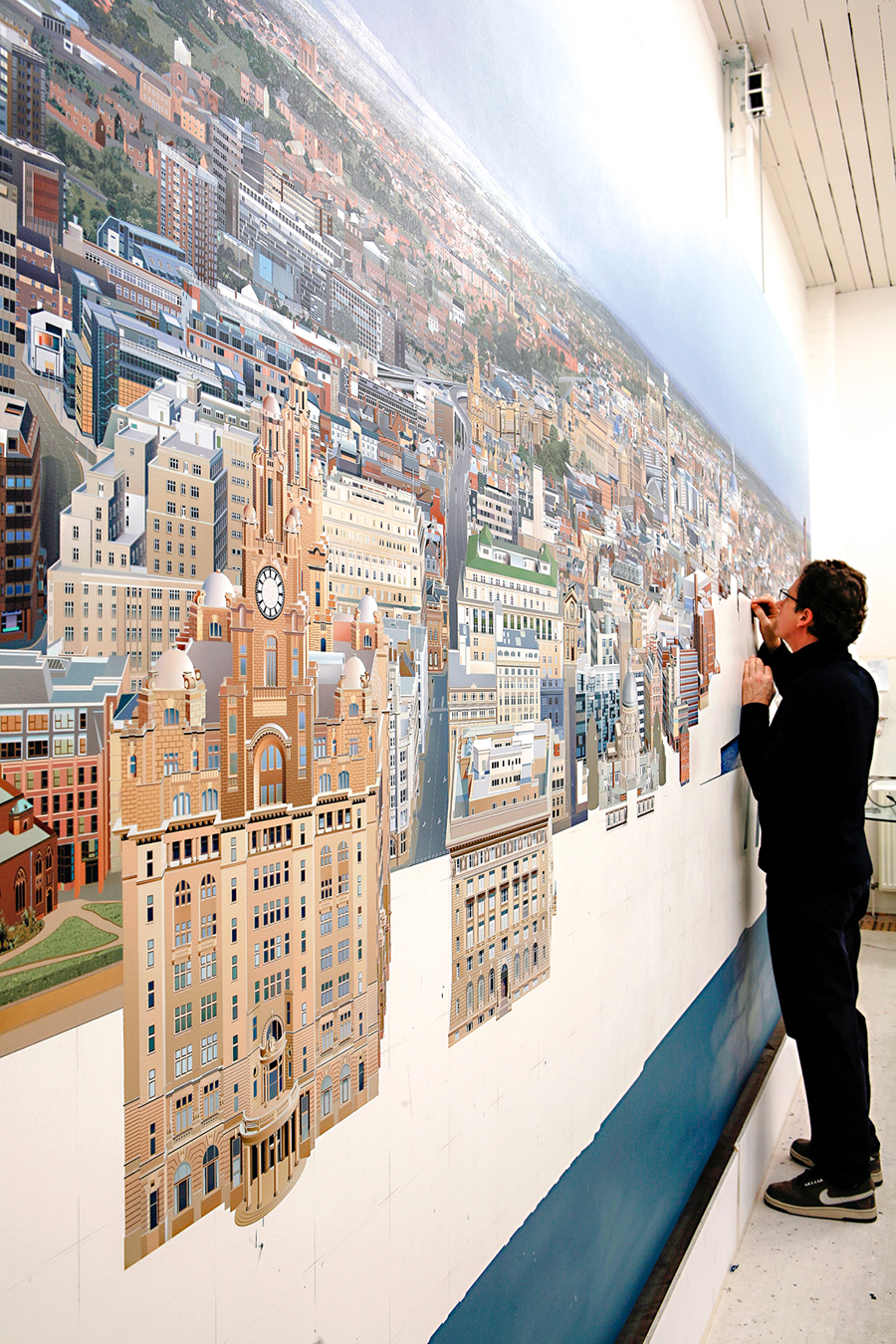
Ben Johnson
The Liverpool Cityscape (progress)
2008
Acrylic on canvas
96 x 192in / 244 x 488cm.
Photo courtesy of the artist.
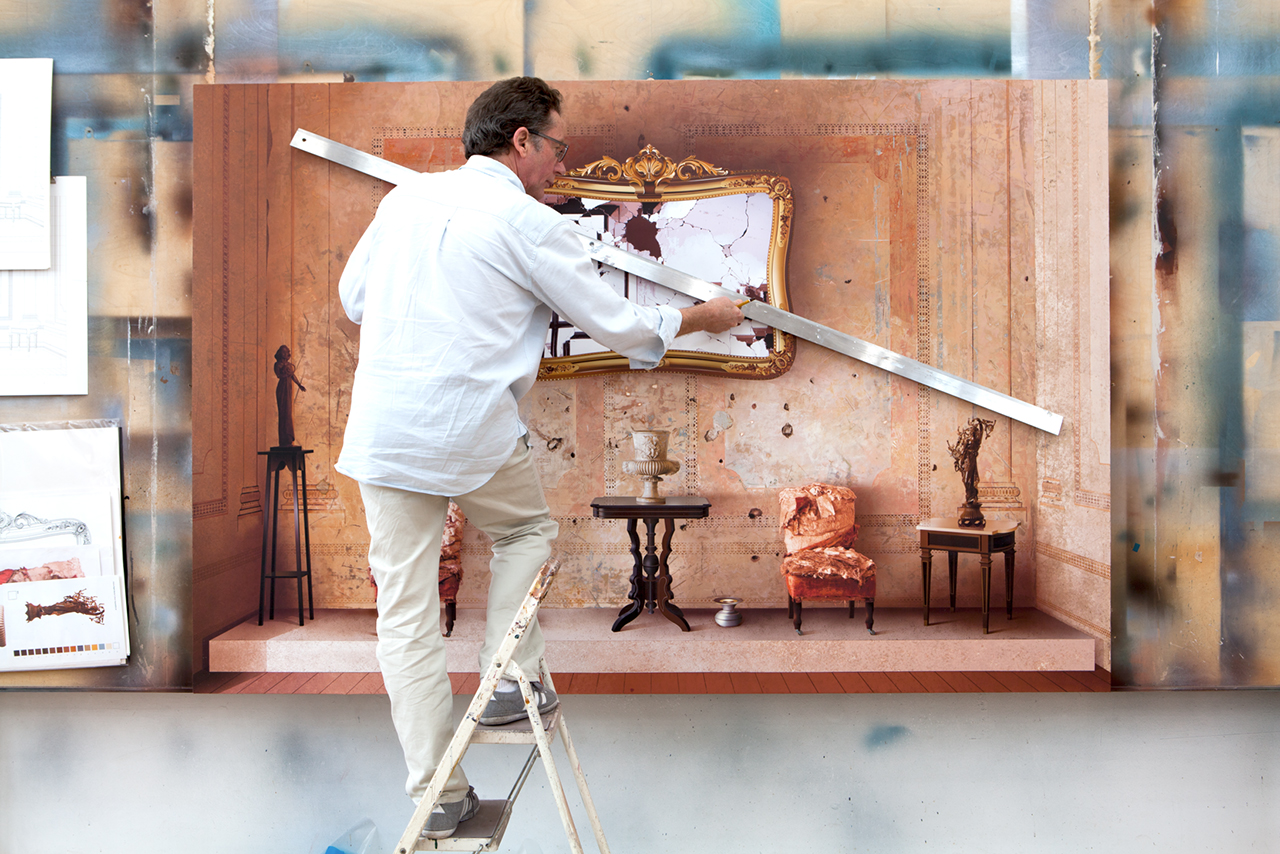
Ben Johnson
Room of the Revolutionary (progress)
2014
Acrylic on canvas
89 x 59 in / 225 x 150 cm.
Photo courtesy of the artist.
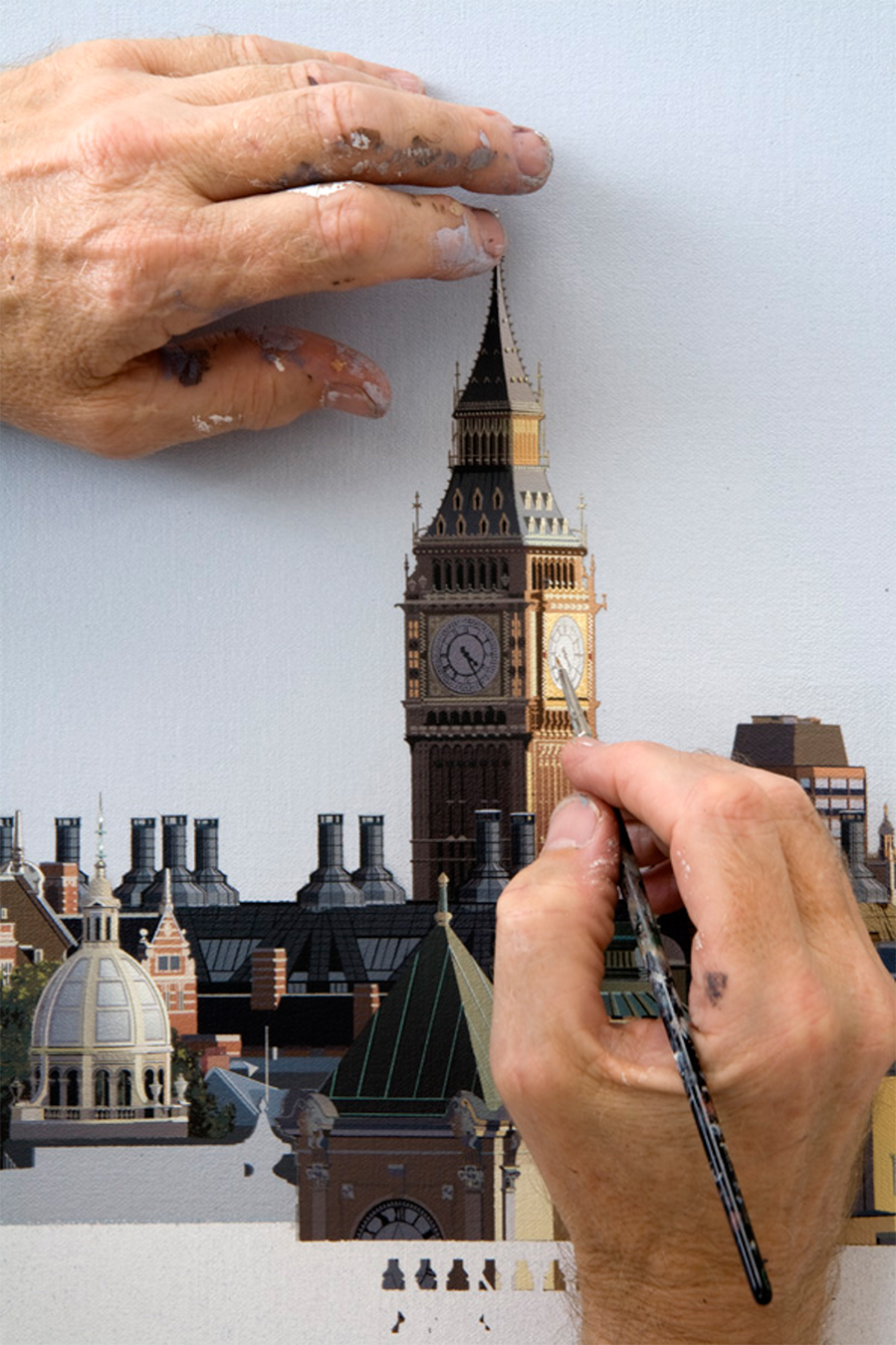
Ben Johnson
Looking Back to Richmond House (progress)
Photo courtesy of the artist.
What strikes us most about Johnson’s paintings is their flatness: even though they depict densely-built urban landscapes and the elaborate geometry of real, three-dimensional spaces, their details are rendered with the same care and clarity whether they are in the foreground or the background. This elimination of distance and acute perception of a vast area depicted with the same intensity is something that the human eye is normally unable to do (only the eye of a god or some superhuman entity could possible take all this detail in with a single glance). It is therefore perhaps no coincidence that one of Johnson’s more recent undertakings is the study and depiction of sacred geometry in Islamic architecture, in turn an art that consciously aims to reveal the limitations of human perception and the vastness of the natural world —and therefore, God’s own infinity. Through their overwhelming detailing and unthinkable amount of labour required to complete them, Johnson’s paintings give us the opportunity to step out of our normal perception of time and space, and become, even if for a moment, divinely omnipresent.

Ben Johnson
Hong Kong Panorama
1997
Acrylic on canvas
6x12ft / 1.83x3.66m.
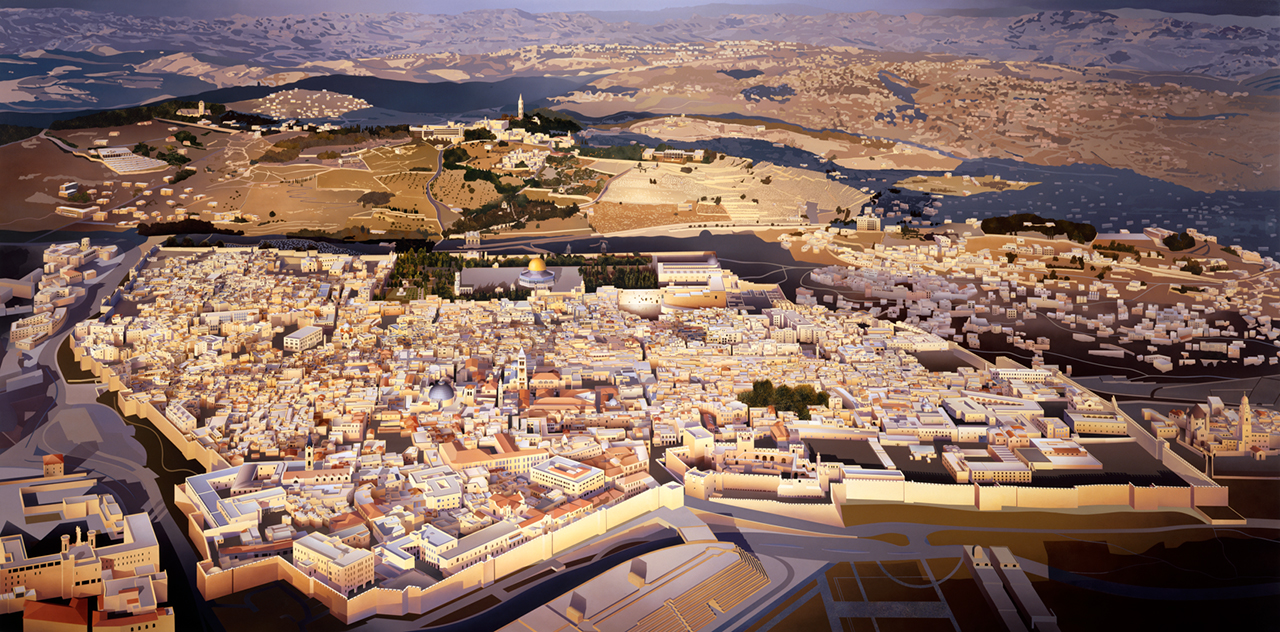
Ben Johnson
Jerusalem, The Eternal City
1999 / 2000
Acrylic on canvas
90x180in / 2029x 4057cm.
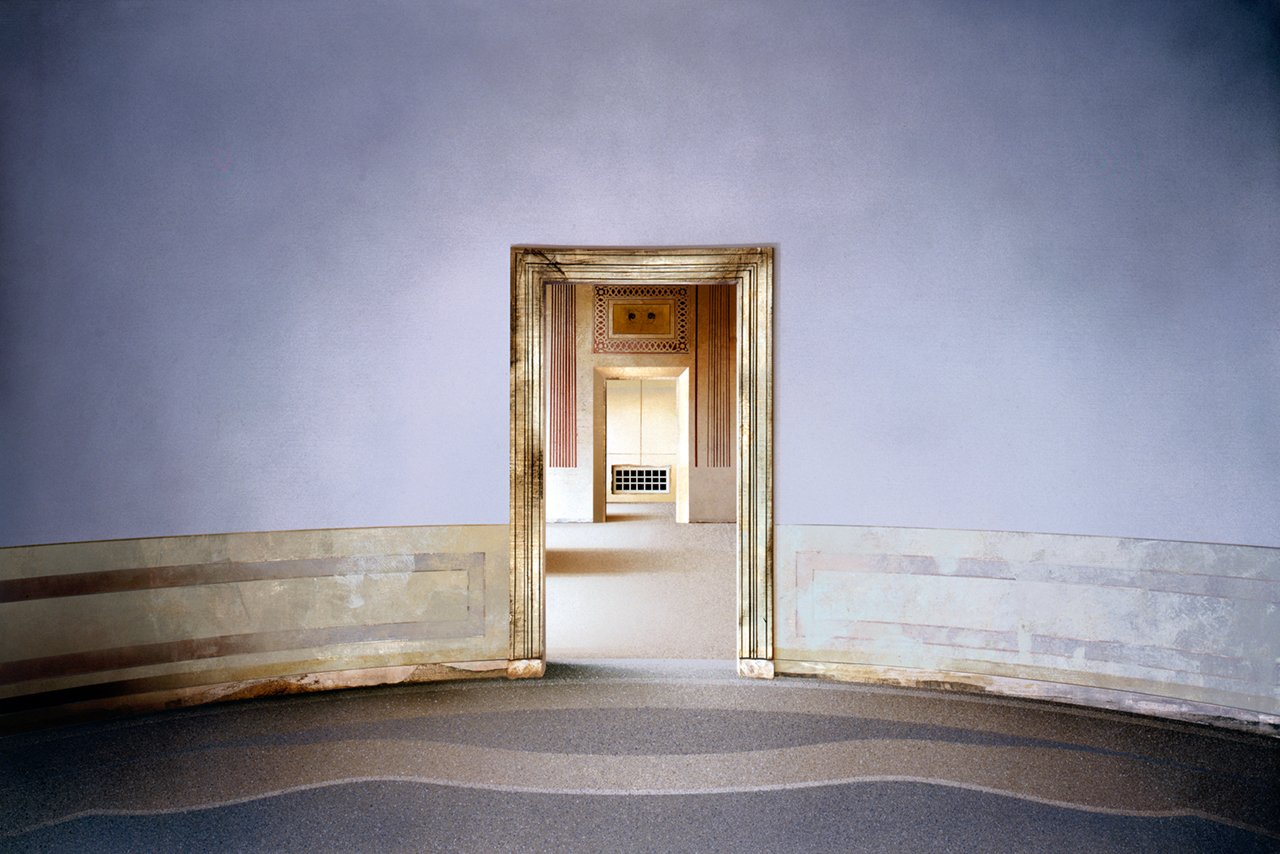
Ben Johnson
The Inner Space
2001
Acrylic on linen
40 x 60 in / 102 x 152 cm.
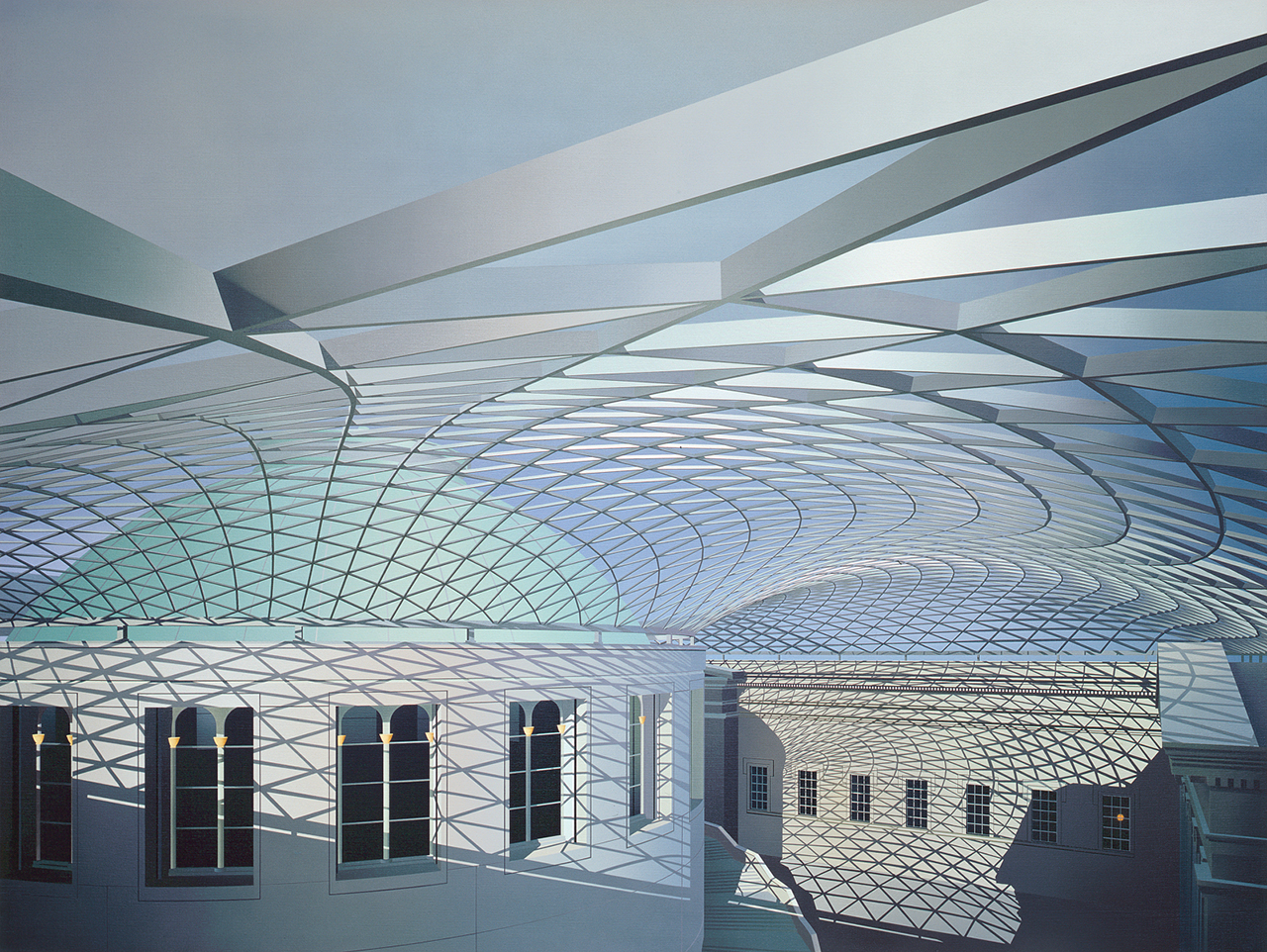
Ben Johnson
British Museum Great Court
2002
Acrylic on linen
59x79in / 150x200cm.
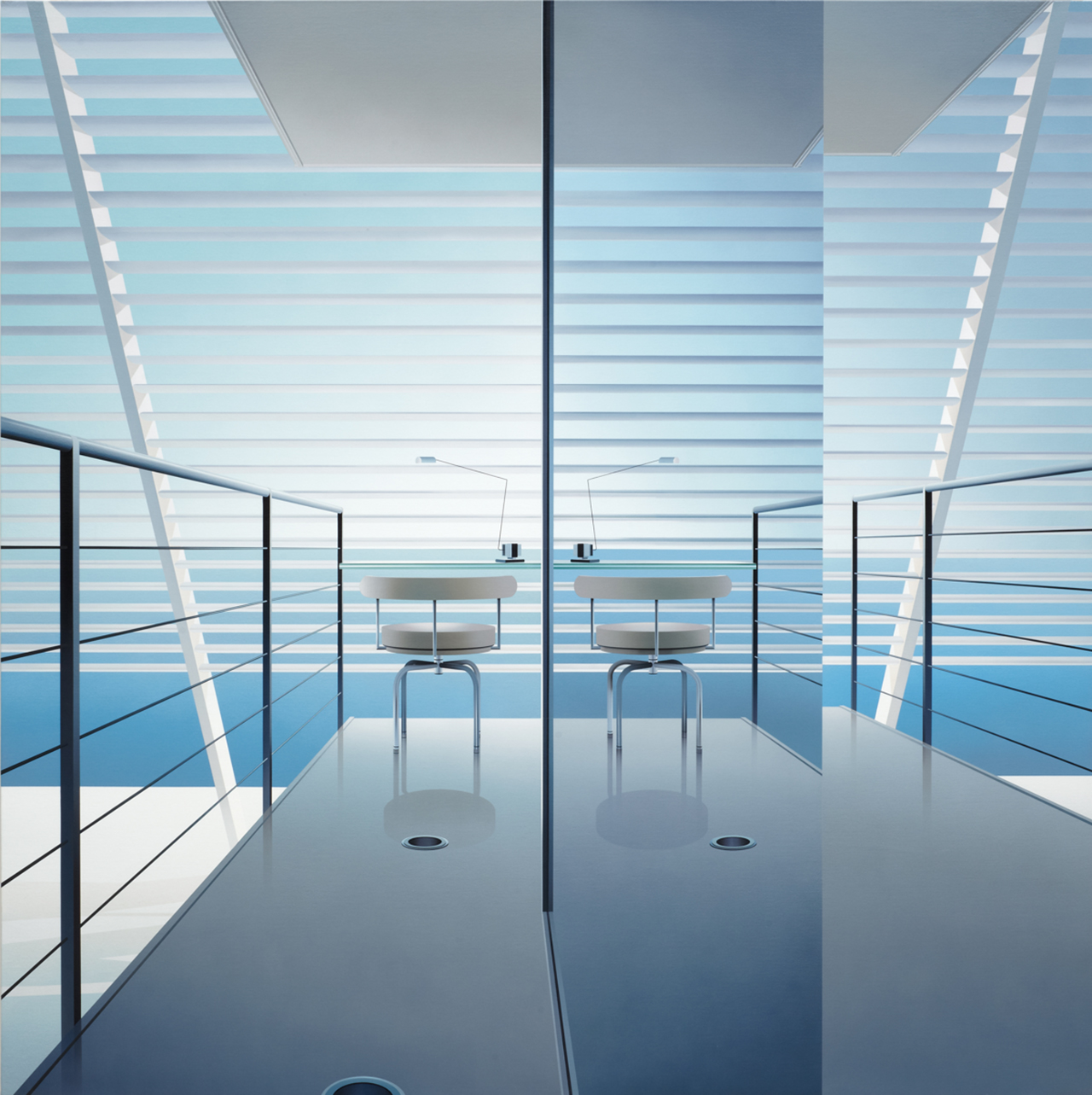
Ben Johnson
Study for Far Horizons I
2009
Acrylic on canvas
20 x 20 in / 50 x 50 cm.
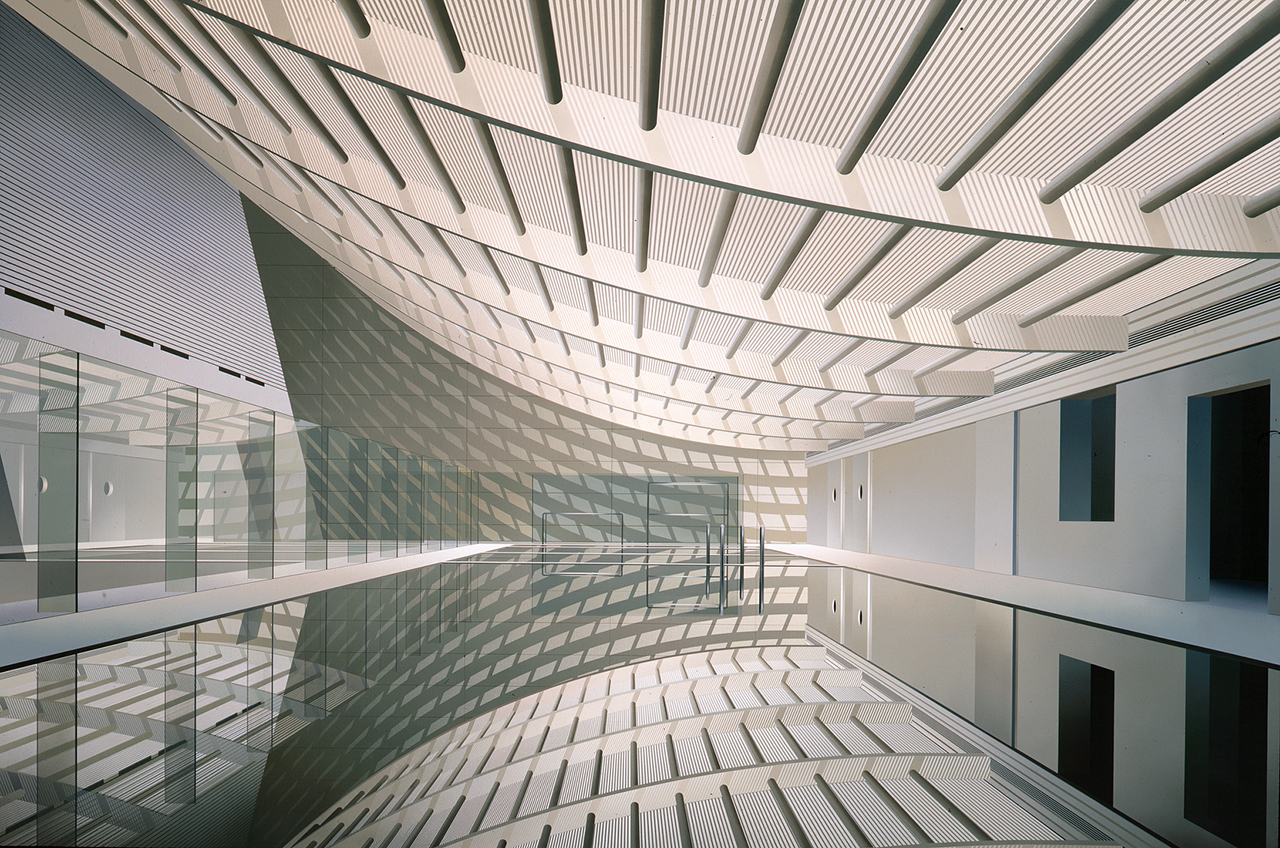
Ben Johnson
Tokyo Pool
2006
Acrylic on canvas
54x81in / 137 x 206 cm.
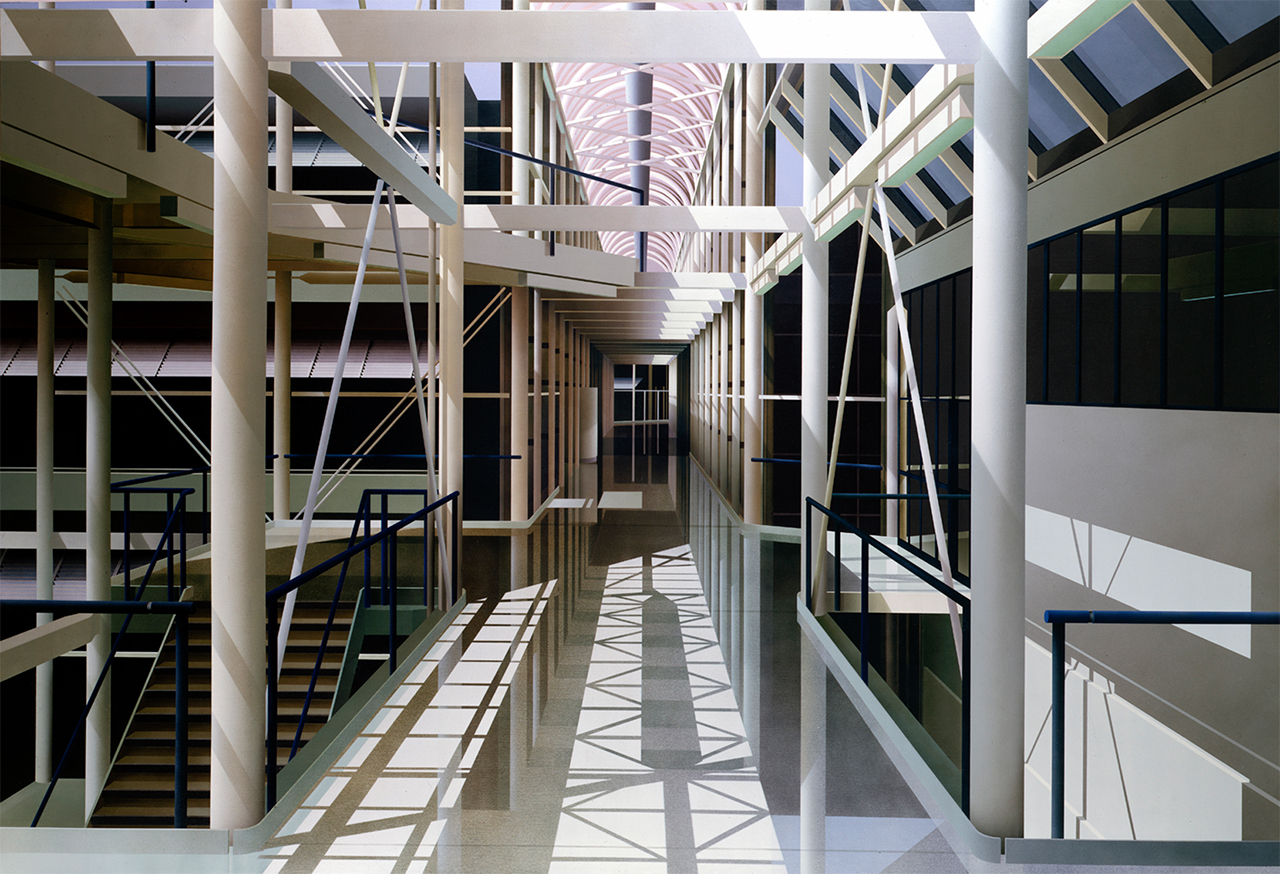
Ben Johnson
IBM North Harbour
1984
Acrylic on canvas
78x117in / 198x297cm.
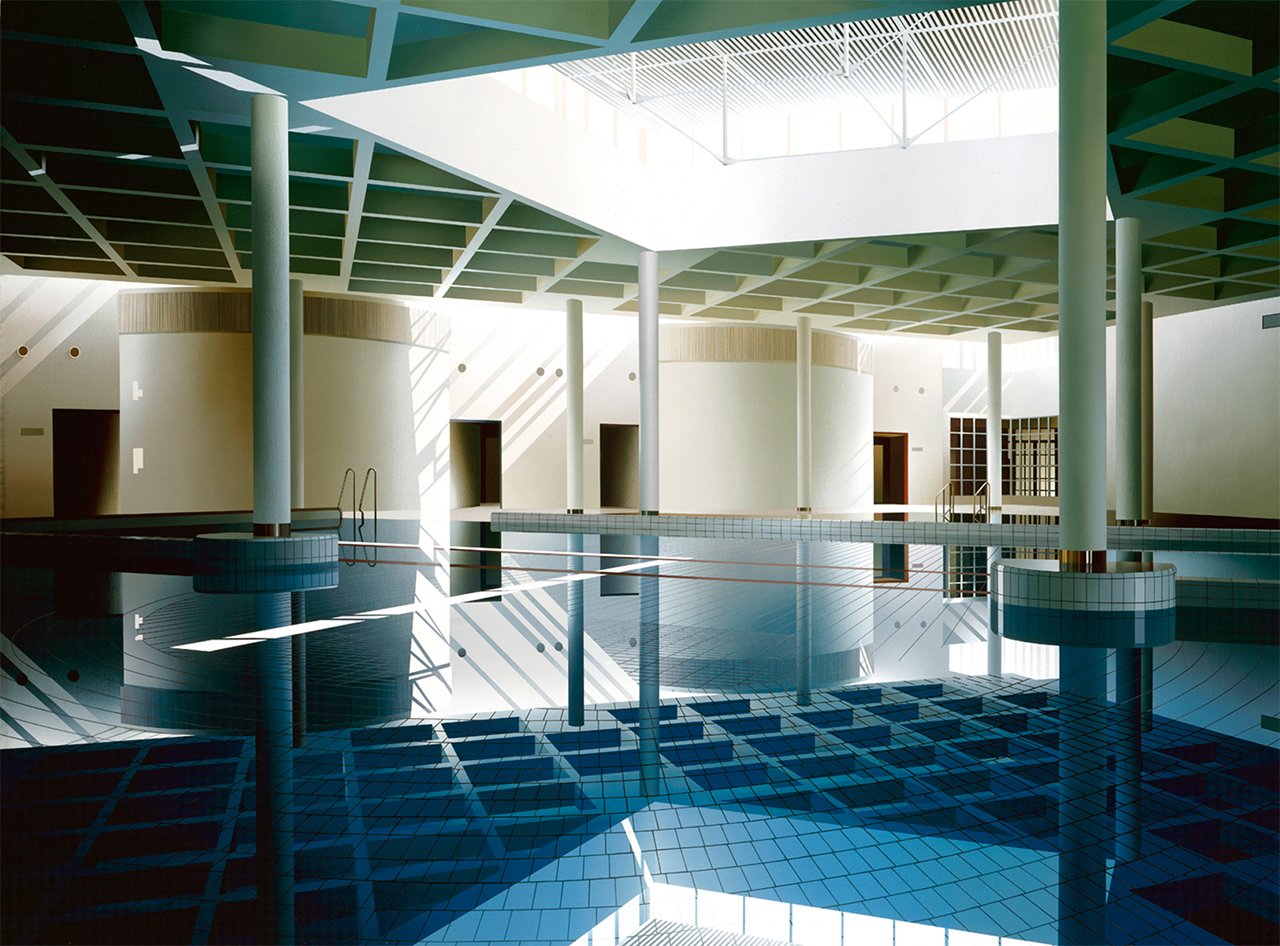
Ben Johnson
The Unattended Moment
1993
Acrylic on canvas
72x96in / 184x243cm.
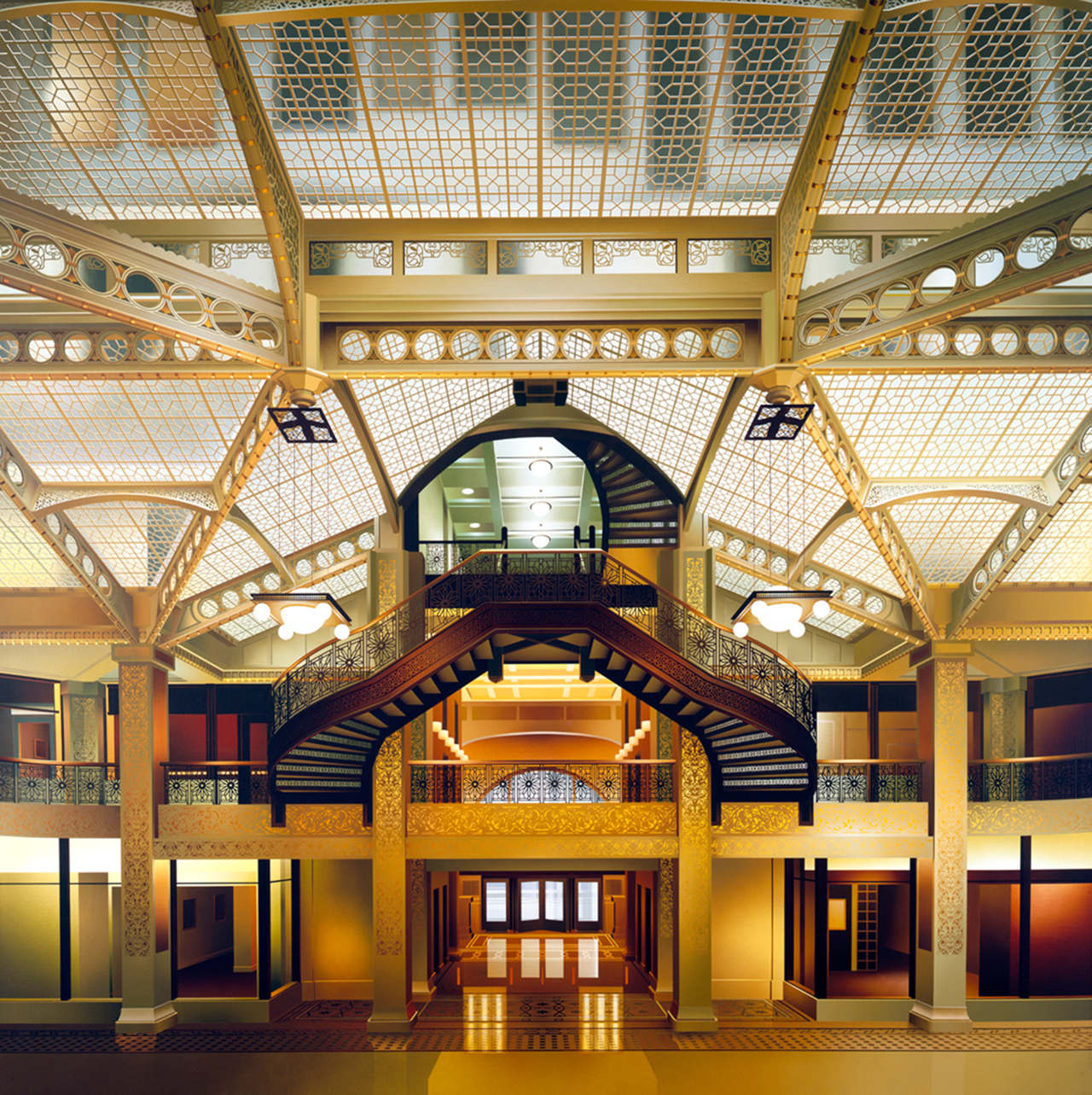
Ben Johnson
The Rookery, Chicago
1995
Acrylic on canvas
91x91in / 231x231cm.

Ben Johnson
Double Doors, France
1979
Acrylic on canvas
84x56 1/4in / 213x104cm.
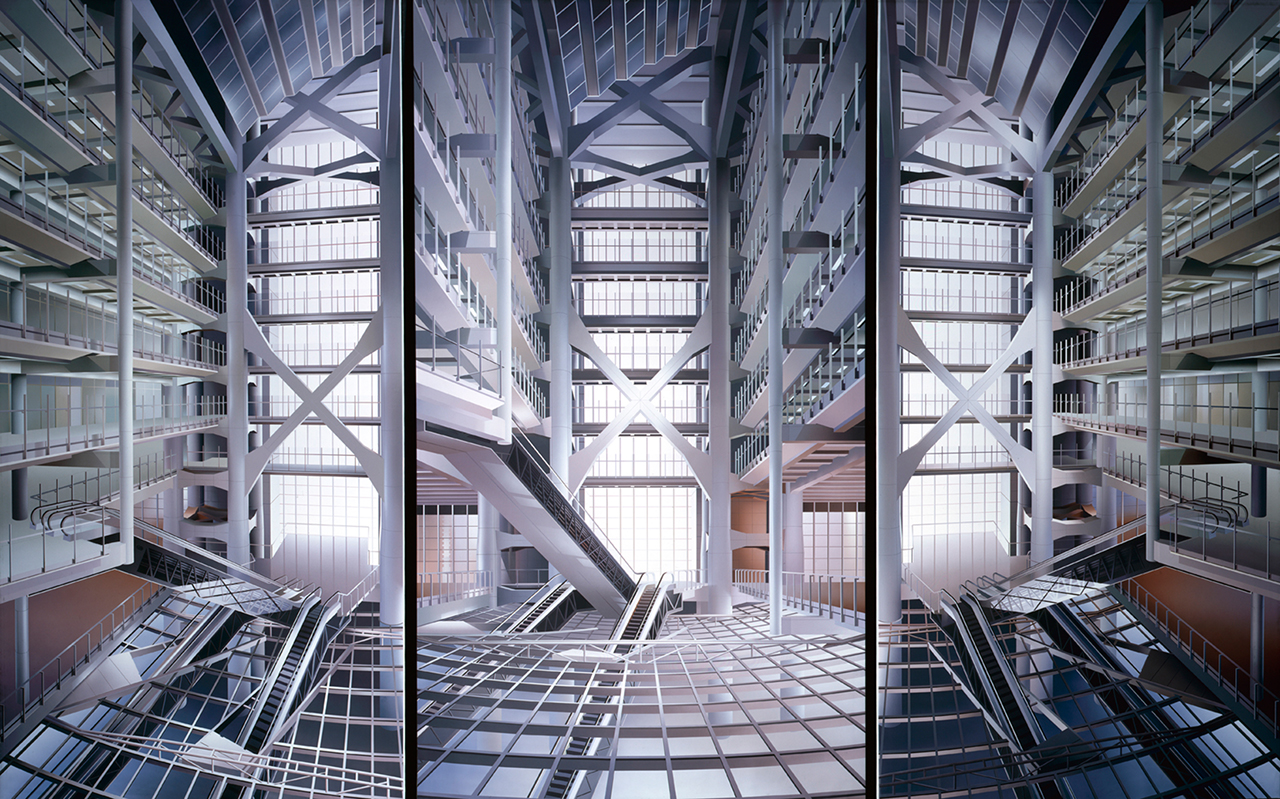
Ben Johnson
Three Moments of Illumination
1998
Acrylic on canvas, triptych
108x170in / 2740x4320cm.

Ben Johnson
Through Marble Halls
1994
Acrylic on canvas
55x72in / 139x183cm.

Ben Johnson
Reflections on Past and Present, Paris
1996
Acrylic on canvas
100x80in / 254x203cm.

















